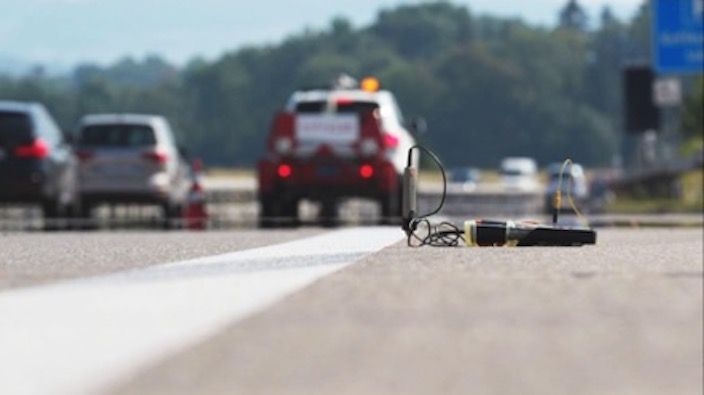A first of its kind induction loop-less Weigh-in-Motion (WIM) system, developed by Kistler, is to be presented to the traffic technology industry at Intertraffic in April.
Onboard sensors capable of registering when a vehicle needs to be measured, the new KiTraffic Digital reduces hassle around installation as well as increasing the reliability of readings and so better at protecting the road network.
With an accuracy of +/- 2%, the system is Kistler’s most accurate WIM system to date, while the new sensor incorporating multiple quartz crystals is able to autonomously deliver data via a digital interface by individually calibrating each crystal.
The digital signal is also very robust against noise (e.g. from high voltage power lines), which allows robust signal transmission. Sophisticated algorithms calculate the wheel, axle and total weight of the vehicle. KiTraffic Digital works independently of almost all external factors, such as driving maneuvers or road conditions, which further improves the accuracy of the measurements.
 Reducing the hardware in a measuring chain reduces the likelihood of component failure or uncertainties. The quartz WIM sensors themselves are generally extremely robust and maintenance free; the reliability of the system depends on the operation availability of the electronics. The new Weigh In Motion System does not require induction loops and works with only one robust cable per sensor. The same ethernet cable that transmits the digital signal from the WIM sensors also provides them with power. This simplifies the installation and improves the overall robustness of the system.
Reducing the hardware in a measuring chain reduces the likelihood of component failure or uncertainties. The quartz WIM sensors themselves are generally extremely robust and maintenance free; the reliability of the system depends on the operation availability of the electronics. The new Weigh In Motion System does not require induction loops and works with only one robust cable per sensor. The same ethernet cable that transmits the digital signal from the WIM sensors also provides them with power. This simplifies the installation and improves the overall robustness of the system.
Road surface, underground structure and geometry have a significant influence on the accuracy and robustness of Weigh In Motion systems. A new service offered by Kistler, the Structural Road Analysis (SRA), identifies the ideal location for a planned WIM installation on any given road, improving measurement quality and ensuring the longest possible lifespan for the WIM installation. As part of this service, Kistler evaluates the geometry of the site and the road itself. Next, the road surface and deeper underground structure are measured using advanced methods to detect even minor irregularities. Road engineers at Kistler consolidate and process the assembled data with the help of a specialized simulation software to find the ideal spot for the installation. Following this in-depth road and pavement inspection, the generated data can also be taken into account to calibrate the KiTraffic Digital sensors more precisely.
The new system will be on display at Kistler’s stand 10.308 at Intertraffic in Amsterdam from 21-24 April 2020.





